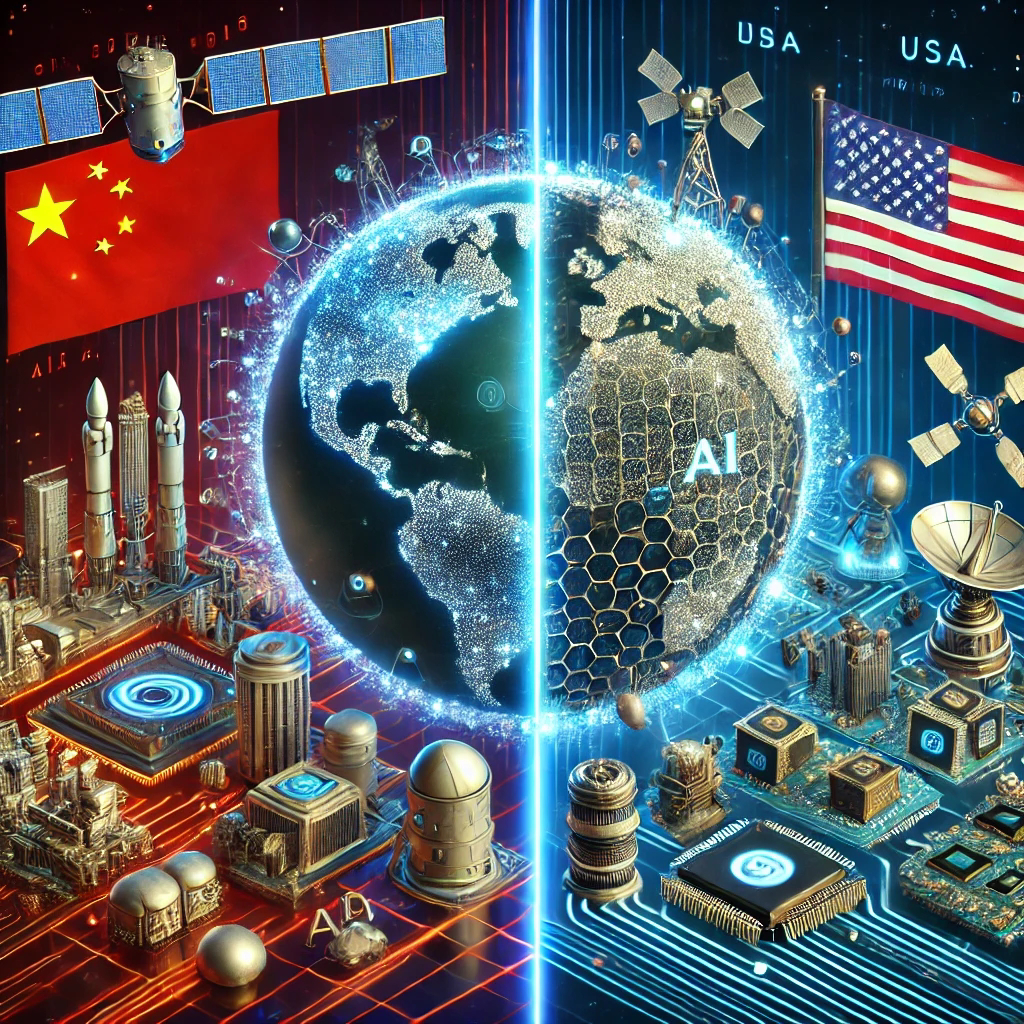Atmanirbhar Ch Ai na...
DeepSeek R1: The Disruptor of the AI World
DeepSeek’s R1 model shattered conventional assumptions about AI development. Until now, the world believed that advancing AI required massive computational resources, costly AI chips, and billion-dollar investments—the formula mastered by OpenAI, Meta, and Google. DeepSeek upended this paradigm.
Trained on a shoestring budget of just $5.6 million, DeepSeek R1 achieved efficiency levels unheard of in the AI industry. Unlike traditional AI models that require high-precision computing and enormous memory, DeepSeek employed low-memory processing and selective activation of model parameters, drastically reducing hardware needs. It ran on outdated chips and delivered performance that rivaled, and in some cases, exceeded, OpenAI’s latest models.
Beyond its efficiency, DeepSeek R1 was open-source, allowing researchers and developers worldwide to tweak, refine, and deploy the model for their own needs. This marked a significant shift from the closed, proprietary approach of Western tech giants and instantly democratised AI innovation, eroding the monopoly of Silicon Valley.
The implications were immediate and catastrophic for the U.S. AI industry. Nvidia, whose high-end GPUs were considered indispensable for AI training, saw its market advantage disintegrate. OpenAI’s premium-priced AI services were suddenly 30 times more expensive than DeepSeek R1, raising existential questions about the sustainability of its business model. The AI economy, once thought to be an exclusive domain of billion-dollar corporations, had been redefined by a budget-conscious Chinese startup.China’s Strategic AI Leap: A National Effort
The rise of DeepSeek R1 is not an isolated incident—it is a product of China’s long-term strategy to establish dominance in cutting-edge technology. While the U.S. imposed stringent chip export bans to stifle China’s AI growth, China circumvented these restrictions by developing low-cost, high-efficiency alternatives. DeepSeek’s breakthrough is proof of China’s ability to innovate despite external constraints.
For decades, Western analysts dismissed China’s technological ambitions, assuming that a centrally controlled state could not foster true innovation. However, since the launch of the Made in China 2025 initiative, Beijing has methodically invested in AI, quantum computing, semiconductors, space technology, and renewable energy—transforming the nation into a formidable scientific and technological power.
The results are undeniable:
- China’s R&D spending in 2023 reached $723 billion, approaching U.S. levels and exceeding India’s tenfold.
- China dominates 80% of global solar module production, making renewable energy cheaper than ever.
- In 2024, 60% of global EV sales were in China, while India’s share remained at a mere 2%.
- China developed its own space station in 2021, after the U.S. banned Chinese astronauts from the ISS.h
- Cina’s hypersonic missile advancements, naval technology, and AI-driven military capabilities now challenge U.S. supremacy.
- China is no longer merely competing with the U.S.—in some domains, it is surpassing it.
Where Does India Stand in the AI Race?
Amid this high-stakes technological showdown, India finds itself invisible. The same country that once defied U.S. sanctions to develop the PARAM supercomputer (1991) and indigenous cryogenic engines for space exploration (2014) has now abandoned the AI battlefield entirely.
When Rajan Anandan from Peak XV asked Sam Altman (CEO of OpenAI) in 2023 whether India could build foundational AI models, Altman scoffed—implying that India lacked the capability. Two years later, China disproved Altman, but India remained absent.The tragedy is not that India lacks resources. Indian IT giants like TCS, Infosys, and Reliance could easily invest the $50–$100 million required for an AI breakthrough. The failure lies in a lack of vision, risk appetite, and a cohesive national strategy. While China aggressively repatriates top AI talent, India celebrates brain drain—boasting about Indian-origin CEOs leading American companies while doing nothing to retain its own innovators.
Moreover, India’s governmental priorities are misplaced. The Ministry of Electronics and IT should be driving AI policy and R&D investments. Instead, the IT Minister tweets about a Coldplay concert, while Indian universities remain preoccupied with non-vegetarian food debates.
Even worse, India’s educational investment is dwindling. The University Grants Commission’s budget was slashed by 61% in 2024, and school enrollments have dropped by one crore. While China marches towards technological leadership, India’s focus remains stuck in historical grievances and cultural rhetoric.
Beyond AI: A Broader Geopolitical Shift
The DeepSeek phenomenon is not just an AI revolution—it is a symbol of the shifting global order. The U.S. and China are engaged in a 21st-century technological cold war, where supremacy in AI, quantum computing, and renewable energy will define global leadership.
China’s trillion-dollar Belt and Road Initiative (BRI) has expanded Beijing’s trade and diplomatic influence across 150 countries.
In military technology, China has now tested its 6th-generation fighter jets, while the U.S. has kept its own under wraps. Meanwhile, India struggles to deliver 40 Tejas fighters due to supply chain constraints.
In nuclear fusion, China’s EAST reactor set a world record in 2024 by maintaining 100 million degrees Celsius plasma confinement for over 1000 seconds—a crucial step toward clean energy dominance.
These developments illustrate a strategic, long-term approach to global leadership, while India remains reactionary and directionless.
The Path Forward: Urgency for an AI Renaissance in India
India cannot afford to remain a bystander in the global AI race. The time for complacency is over. If India wants to remain relevant in the next technological revolution, urgent and radical policy shifts are required:
- National AI Mission: Invest billions into AI research, semiconductor development, and quantum computing.
- Talent Retention and Repatriation: Offer competitive incentives to top Indian AI researchers working abroad.
- Public-Private Collaboration: Tech giants like TCS, Infosys, and Reliance must spearhead foundational AI model development.
- Education Reform: Prioritise STEM education, R&D funding, and scientific literacy over ideological distractions.
- Strategic Autonomy in Technology: Reduce dependency on foreign semiconductor imports, replicate China’s self-sufficiency model.
If India fails to act now, it risks falling irreversibly behind in the technological arms race of the 21st century. China has moved ahead. The U.S. is fighting back.
And India? India must decide whether to lead, follow, or remain irrelevant.






Comments